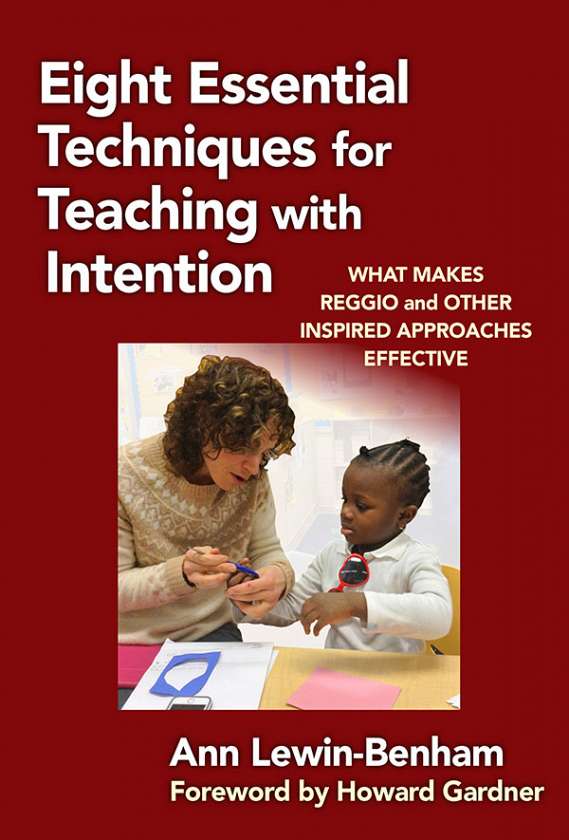Professors: Request an Exam Copy
Print copies available for US orders only. For orders outside the US, see our international distributors.
Foreword by: Howard Gardner
Publication Date: June 14, 2015
Pages: 208
Series: Early Childhood Education Series

In her latest book, bestselling author Ann Lewin-Benham describes eight techniques that foster intentional and reflective classroom practice. She presents over 70 novel exercises to help teachers learn to use body, face, hands, voice, eyes, and word choices to precisely convey meaning. Some exercises are for teachers to practice, while others build intention and reflection in children. Dozens of scenarios from typical classroom situations contrast unintentional and intentional teaching behaviors. A self-assessment enables teachers to measure how intentional and reflective they become as they learn to use the eight techniques. This lively and often humorous resource is a companion to Lewin-Benham’s Twelve Best Practices for Early Childhood Education, which explains what to teach and why. This new book explains how to teach.
Book Features:
Ann Lewin-Benham founded and for 20 years directed the Capital Children’s Museum in Washington, DC, where she also founded and directed the Model Early Learning Center, the only U.S. preschool accredited by Reggio educators. Her books include Possible Schools; Powerful Children; Infants and Toddlers at Work; Twelve Best Practices for Early Education; and What Learning Looks Like (with Reuven Feuerstein). For information about Ann’s teacher workshops visit her website: AnnLewin-Benham.com.
"I know of no book like the one that you are now reading. . . . Whether you have never stepped into a classroom as a teacher, or whether (like me) you have taught various subjects at various ages for decades, you cannot fail to learn from this book. Indeed, I suspect that the teaching of many readers will be changed qualitatively, as will the learning experiences of their fortunate students."
—From the foreword by Howard Gardner, professor of cognition and education at the Harvard Graduate School of Education
"In her new book, Ann Lewin-Benham draws upon her vast knowledge of successful progressive educational approaches and skillfully uses her wisdom to provide us with a new mindset and toolset that will stand the test of time—the knowledge, skills, dispositions, and intentional actions of highly effective teachers of young children."
—Maurice Sykes, Executive Director, Early Childhood Leadership Institute,
University of the District of Columbia
"With her eight essential techniques, Lewin-Benham clearly and beautifully captures the essence of the decision-making dynamics from which effective teaching and learning environments emerge."
—Carol Brunson Day, Board President 2014–2016, NAEYC
In recent years, the American classroom has become a highpressure
cauldron of institutional
imperatives, inside which children and their teachers are strictly held to a highly scripted curriculum and
to the delivery and monitoring protocols that support it, presumably for their own good but officially "for
the good of the country.” In this context, no one but an exceptionally strong, experienced, and
determined educator would stand up and (as the grandmother of your dreams) say: “Enough is
enough.” Ann LewinBenham
has done precisely this, in a psychologically astute, developmentally
modern, crisply informative, and warmly companionable workbook that will be embraced by every teacher
whose greatest passion is to see the lights go on inside children’s heads. Frank
R Wilson, author
of The Hand: How its Use Shapes the Brain, Language, and Human Culture
Professors: Request an Exam Copy
Print copies available for US orders only. For orders outside the US, see our international distributors.